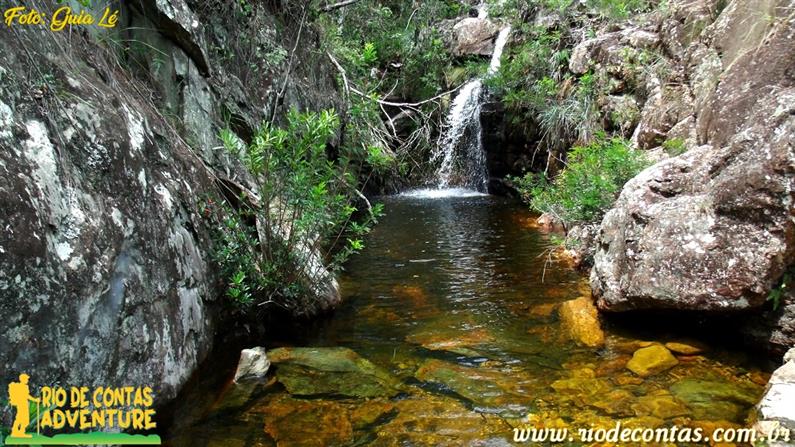The population of Rio de Contas originated at the end of the 17th century, when travellers from Goiás and the north of Minas Gerais, on their way to the city of Salvador, capital of the Province of Bahia, founded a small settlement, which was named Crioulos – a resting point for the exhausting trek.
This settlement was located on the Serra das Almas Plateau, on the banks of the Rio de Contas Pequeno, today known as the Rio Brumado.

A small octagonal chapel was then built, dedicated to Our Lady Santana. Soon afterwards, auriferous veins and gravel were discovered in the bed of the Rio de Contas Pequeno, in its tributaries and in the surrounding hills.
This attracted a large number of prospectors, especially bandeirantes from São Paulo and Minas Gerais, who went up the bed of the Rio de Contas Pequeno and, exploring the nearby mountains, founded another settlement – Mato Grosso– three leagues away and at an altitude of 1,450 metres.
The Jesuits who accompanied the bandeirantes built a church under the invocation of St Anthony. In 1718, the first parish of the Alto Sertão Baiano or Sertão de Cima was created, called the parish of Santo Antônio de Mato Grosso.
At the beginning of the 18th century, the Jesuits built another church, 12 kilometres below the village of Crioulos, dedicated to Our Lady of Livramento.
On 20 October 1722, two towns were created in the interior of Bahia: the towns of Santo Antônio de Jacobina and Nossa Senhora do Livramento e Minas do Rio de Contas.
Authorised by the Royal Charter of 27 November 1723, Vasco César de Menezes commissioned Colonel Pedro Barbosa Leal to found the town, which he did in 1724. The creation was approved by Royal Provision dated 09 February 1725.
The Royal Provision of 2nd October 1745 authorised the town’s move to the village of Crioulos, on the plateau where the city of Rio de Contas stands today.
Elevated to a town, the village of Crioulo was renamed Vila Nova de Nossa Senhora do Livramento e Minas do Rio de Contas.
With the transfer of the town centre, the Salvador metropolitan government ordered the construction of the Town Hall and Jail, the Town Hall, the Foundry House and the Pelourinho.
See the Chapada Diamantina map
Rio de Contas Tourist Attractions
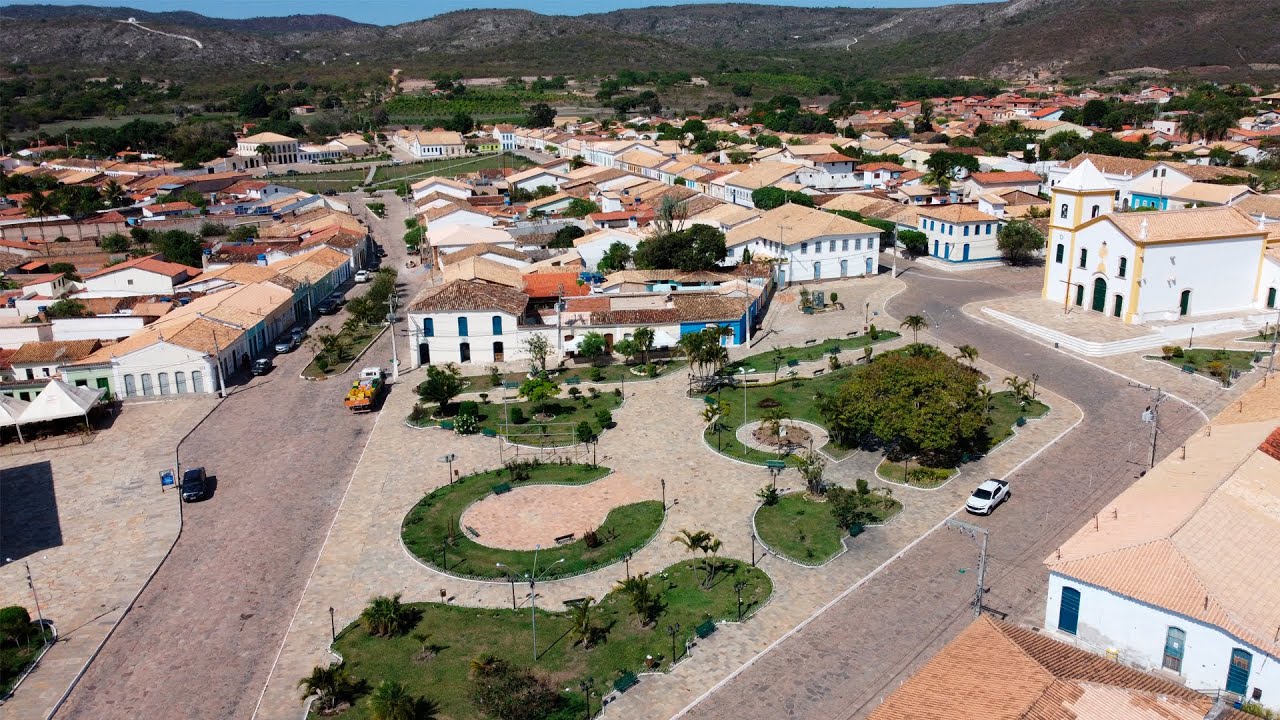

Imagens Aéreas de Rio de Contas

RIO DE CONTAS - SUA HISTÓRIA08:57

História de Rio de Contas08:39

Rio de Contas Guia de Turismo06:03

Rio de Contas Patrimonio Nacional06:59

Rio de Contas na Chapada Diamantina12:51

Rio de Contas Dicas de Viagem02:17

Rio de Contas Guia de Viagem07:48

Rio de Contas - Drone12:01

Igreja de Santana em Rio de Contas25:49

AS BELEZAS E A HISTÓRIA DE RIO DE CONTAS08:39
The municipality of Rio de Contas is known today for its natural beauty, including waterfalls, rivers, streams and beautiful rock formations.
The town is home to the three highest peaks in the north-eastern region of Brazil, with an altitude of over 2,000 metres.
Once known as the city of gold, Rio de Contas is now recognised for the richness of its natural landscapes.
Due to the high altitudes, the city has several mountain ranges, providing visitors with beautiful landscapes and breathtaking views.
1. Colonel’s Bridge
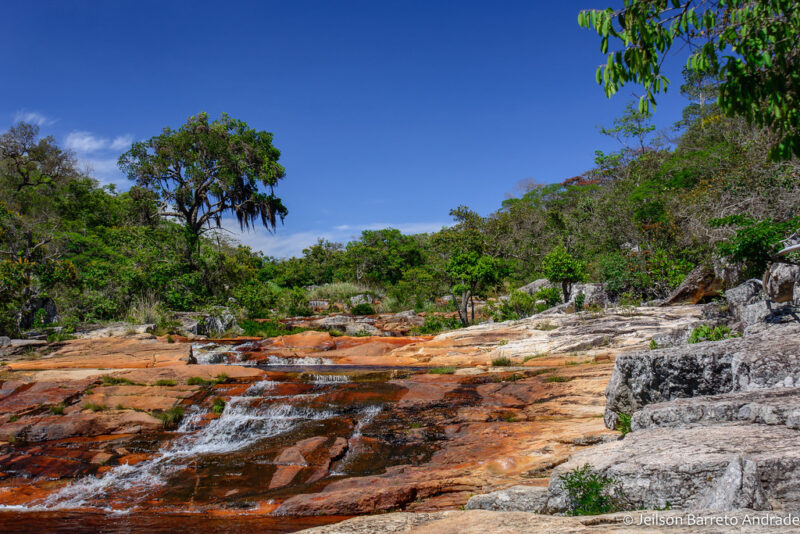
A stretch of the Brumado River, with several rapids and natural pools, is today the most popular place for visitors to Rio de Contas.
Known as the Seven Wells, the site offers pools of varying depths, where both children and adults can make the most of this attraction. The structure is simple, with a bar service and an area for camping and picnics. Nowadays, it’s a must for anyone visiting Rio de Contas.
2. Brumado River Waterfall
Approximately 100 metres high and with four jumps in a row, this waterfall allows access to its upper part, providing a complete view of its frontal and lateral beauty.
It is an excellent spot for photographs, where you can capture all the grandeur of the fall.
The descent near the waterfall requires some effort, but the experience is worth it, especially when you reach the top of the largest waterfall in the municipality.
3. Fraga Waterfall
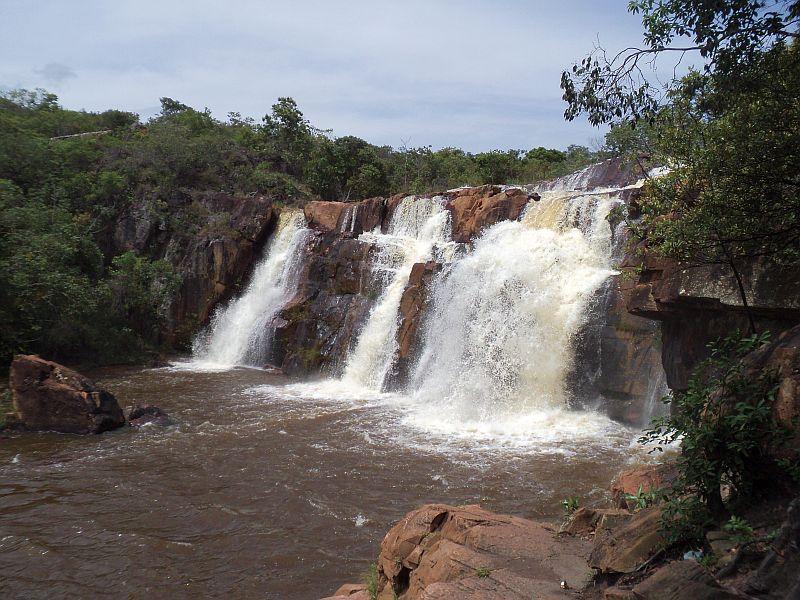
A postcard from the municipality of Rio de Contas, the Fraga Waterfall enchants with its 18 metre jump and exuberant beauty. From the waterfall, you can see the beginning of the Serra das Almas, making up a stunning landscape.
Next to the main falls, there is access to the lowest part of the waterfall, which provides an excellent vantage point for photographs and moments of contemplation.
4. Poço das Andorinhas
Poço das Andorinhas in Rio de ContasThe Poço das Andorinhas is a small pool of crystal clear water hidden in the Serra do Porco Gordo. When you arrive, it is common to see several swallows coming out of a small cave on the site, which gave rise to its name.
The trail that leads to the well is full of other wells and small waterfalls ideal for bathing, making up one of the most beautiful routes in Rio de Contas. Despite its enchanting beauty, the place is still little visited, offering a peaceful experience in the midst of nature.
5. Jiló Waterfall
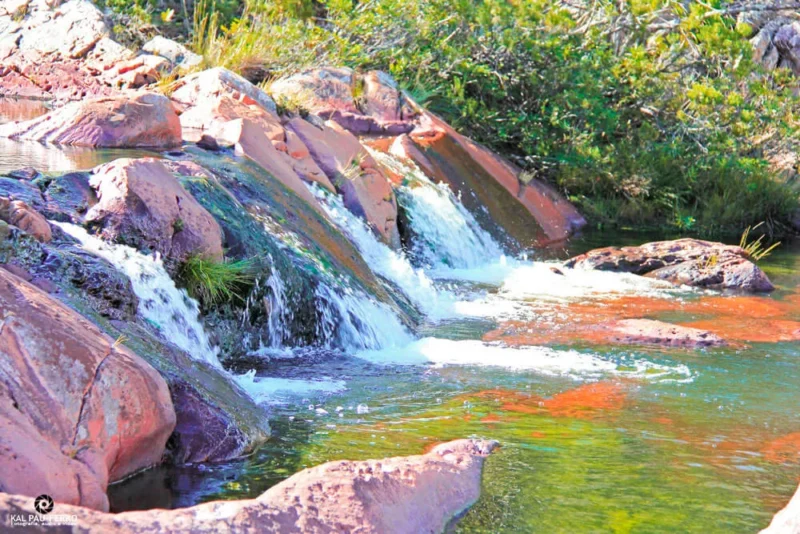
Located on the Brumado River on the way to Poço Preto, Cachoeira do Jiló is an excellent bathing spot. Formed by small rapids, the waterfall allows several people to enjoy its refreshing waters at the same time, making it a popular stopping point for those exploring the region.
6. Mocotó Waterfall

Between valleys and mountains, the road to the waterfall is lined with coffee plantations which, when in bloom, create the so-called ‘Bridal Veil’, an enchanting landscape.
This route is full of surprises: on the way, you pass a viewpoint with a complete view of Pico das Almas, Pico do Itobira, Serra do Barbado, Gerais de Mucugê, the Brumado River Dam, the Quilombola Community of Barra and part of the city of Rio de Contas.
7. Raposo Waterfall

Small in size and ideal for small groups, this waterfall has clean waters and is hidden by a small forest.
Nearby access requires some effort, but it’s worth it, as the waterfall only reveals itself when you get very close, creating a reserved and special atmosphere for those seeking intimate contact with nature.
8. Black Well
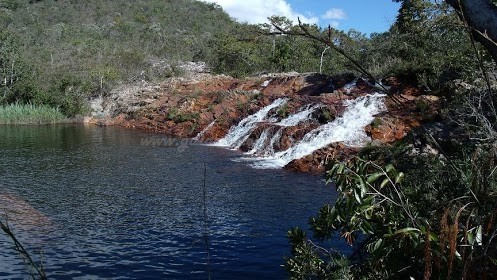
Excellent for swimming, Poço Preto is located 13 km from the centre of Rio de Contas. Although there is no beach, you can sit on the rocks of the Brumado River and enjoy the beautiful panorama. Approximately 6 metres deep, the well is ideal for those seeking refreshment and tranquillity.
Nearby are the Jiló Waterfall and the Vaccaro Farm, where Serra das Almas Organic Cachaça is produced, an additional attraction for visitors.
9. Buracão Waterfall
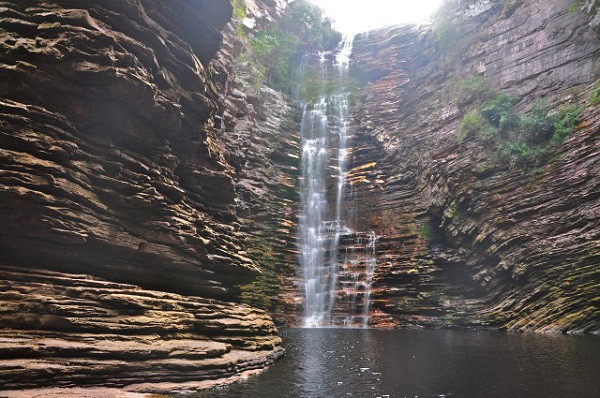
This is one of the best-known waterfalls in the Chapada Diamantina, famous for its impressive falls and a beautiful pool of crystal-clear water where visitors can bathe. The trail to the waterfall can be a little challenging, but the beauty of the place is well worth the effort. It is a popular destination for lovers of nature and ecotourism.
10. Royal Road
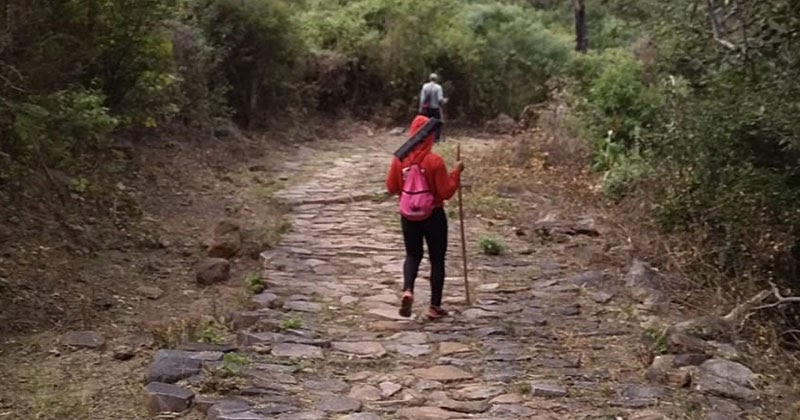
The road, paved with stones, was used to transport gold and supply the city during the colonial period. This stretch of the Estrada Real, near Rio de Contas, is in a good state of repair, covering approximately 6 kilometres.
Its construction began in 1726 and it is an important historical legacy of the region.
11. Pico das Almas
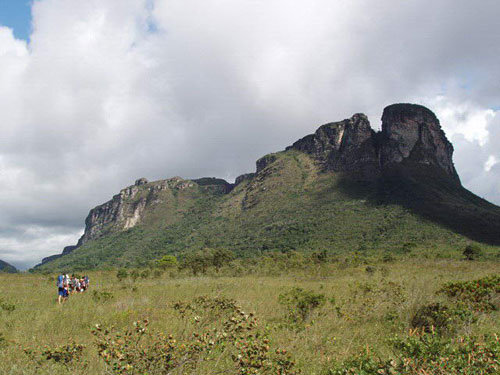
At an altitude of 1,958 metres, Serra das Almas is the third highest point in the Northeast. As well as being an important tourist destination, it is also an ecological sanctuary, where the English Botanical Garden Kew Garden conducted research for 20 years. The place has an extremely rich flora, with plant species that are unique on the planet.
The beautiful rock formations, moulded by nature over time, enchant all who visit the region. It is worth emphasising that collecting plants in the Serra das Almas is considered a crime against Brazilian heritage, highlighting the importance of environmental preservation.
12. Itobira Peak, 1970 metres high

At an altitude of 1,970 metres, Pico do Itobira is the second highest point in the Northeast. Along the way, you can see a wide variety of orchids, bromeliads, velosias, barbacenes, evergreens and carnivorous plants, highlighting the rich biodiversity of the region.
From the top of the peak, you can see Pico das Almas, Serra do Barbado, Serra do Sincorá, as well as a beautiful view of the Brumado River Dam and part of the city of Rio de Contas.
Along the way, there is also a small waterfall and small wells that are ideal for bathing, making the experience even more enjoyable for visitors.
13. Pico do Barbado with an altitude of 2,033 metres

Pico do Barbado, 2,033 metres high, is the highest point in the north-east of Brazil, separating the towns of Rio de Contas, Abaíra and Rio do Pires. In the forests near the mountain, the barbado monkey used to live, giving rise to the name ‘Serra do Barbado’.
There are two options for climbing the mountain, attracting many adventurers looking to take on this great challenge. The first option takes around 5 hours by car to get there and back, as well as 6 hours of walking to get there and back.
The second option takes 3 hours by car to get there and back, but the walk takes a total of 14 hours round trip. From the top of the mountain, you have a privileged view of the entire Chapada Diamantina, including Pico das Almas and Pico do Itobira in Rio de Contas, Serra da Tromba, Serra do Sincorá in Ibicoara, Três Morros in Piatã and Morro do Pai Inácio in Palmeiras.
14. Historical Monuments in Rio das Contas
The city of Rio de Contas has more than 400 houses listed by the National Historical and Artistic Heritage Institute, all of which are very well preserved. Some of these houses were built when the town was founded in 1723.
There are also several monuments that have been listed separately. As you walk through the town’s streets, you’ll feel like you’re travelling back in time.
Rio de Contas is Brazil’s first planned city and its historic centre covers an area of 19.2 hectares. When it was founded, all the houses were lined up, with wide streets. The houses were painted white, with blue window frames, which gives the town a special charm.
1. Old Town Hall and Jail
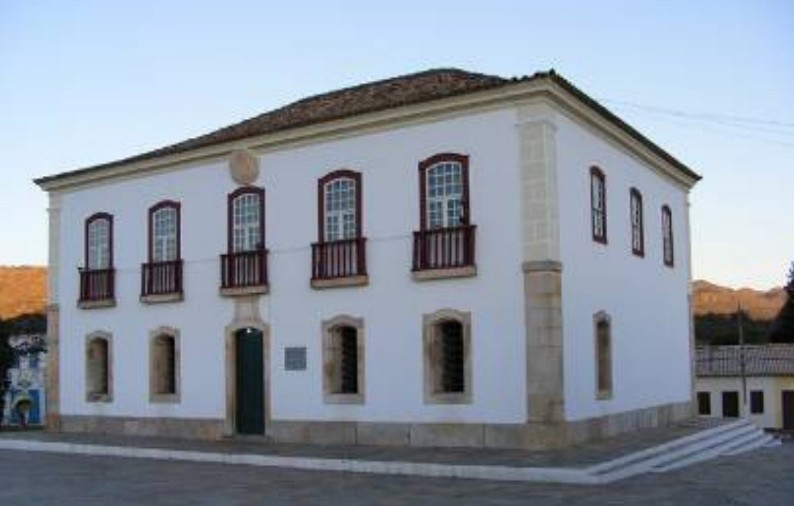
- Location: The Old Town Hall and Jail is located in the heart of Rio de Contas, reflecting the town’s importance during Brazil’s colonial and imperial periods.
- History: Built in the 18th century, this building served as the seat of local power, where the administrative activities of the town council were carried out. As well as being the seat of government, it also housed the jail, where prisoners were held. The structure is a symbol of the public administration of the time and the judicial practices of the past.
- Architecture: The house has typical features of colonial architecture, with an imposing façade and decorative elements that reflect the style of the time. Of particular note are the windows with carved frames, the use of arches and the symmetrical layout of the building, which contribute to the historical aesthetic of the city centre.
- Cultural importance: The Old Town Hall and Jail is an important landmark in preserving the memory of Rio de Contas. It symbolises the political and social organisation of the municipality, as well as serving as a point of reference for visitors wishing to learn more about the history of the town and its institutions.
- Visitation: Although it is not a formal tourist attraction, the building is frequently visited by tourists and locals who want to appreciate the history and architecture of the place. The house is part of Rio de Contas’ cultural heritage and contributes to understanding the city’s historical identity.
2. House on Barão de Macaúbas Street
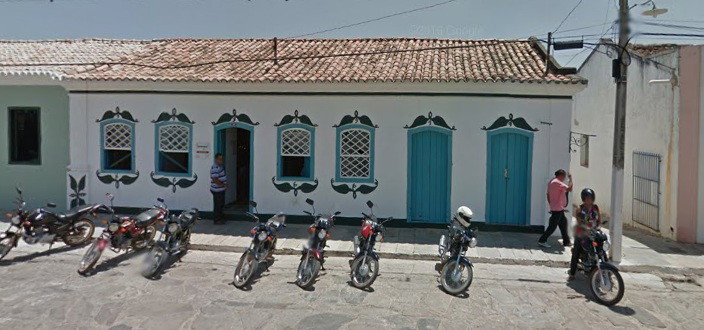
- Location: Located in Rua Barão de Macaúbas, this house is one of the many historic mansions that make up the centre of Rio de Contas, a municipality known for its rich cultural and architectural heritage.
- History: The house is historically significant, reflecting the colonial architectural style of the time it was built. Like many of the town’s mansions, the building bears witness to the housing practices and way of life of its former inhabitants.
- Architecture: With a façade typical of the period, the house is characterised by details including wooden-framed windows, balconies and a solid structure, which are common features of colonial mansions. These architectural elements contribute to the charm and beauty of the street.
- Local Culture: Rua Barão de Macaúbas, like other streets in Rio de Contas, is a place where you can see the interaction between the past and the present. The preserved houses, including this one, are an invitation for visitors to explore local history and appreciate the architectural heritage.
- Visiting: Although it is not a formal tourist attraction, the house is part of the city’s historical context and can be admired by those strolling along Rua Barão de Macaúbas. The preservation of buildings like this is vital to keeping the history and culture of Rio de Contas alive.
3. São Carlos Theatre – One of the three oldest in Brazil

- History: Founded in 1892, the São Carlos Theatre is one of the three oldest theatres in Brazil and the oldest in the interior of Bahia. Located in Largo do Rosário, the theatre is an important cultural asset in the city of Rio de Contas.
- Capacity and Structure: The theatre has a seating capacity of 120. At the time of its foundation, spectators used to bring their own chairs to watch the plays. The venue’s architecture reflects the style of the colonial period, with elements that preserve its history and charm.
- Culture and Society: During the 19th century, the São Carlos Theatre was a vital cultural space, where theatre and musical performances were held. A curious aspect of the time is that women were forbidden to perform, and men would cross-dress to play female roles, highlighting the social norms of the time.
- Current importance: Today, the São Carlos Theatre continues to be a symbol of Rio de Contas’ culture and tradition, and a place that preserves the memory of the region’s performing arts. Its maintenance and valorisation are fundamental so that new generations can appreciate and understand the cultural richness of the city.
- Visitation: The theatre is an attraction for tourists and locals alike, offering a window into Rio de Contas’ cultural past and contributing to the appreciation of the city’s historical heritage.
4. House where Abílio Cesar Borges – ‘The Baron of Macaúbas’ was born
- Location and History: The house that once housed the Municipal Public Archives is the birthplace of Abílio César Borges, known as ‘The Baron of Macaúbas,’ on 9 September 1824. Located in Rio de Contas, the house is an important historical landmark in the town.
- Contributions: A graduate in medicine from the Court Academy, Abílio César Borges stood out as a great educator, with Rui Barbosa and Castro Alves as his most famous pupils. In addition to his work in medicine, he organised, with his own resources, the Zuavos Battalion, which rendered services to the Homeland in the Paraguayan War, demonstrating his commitment to the country.
- Legacy: The Baron of Macaúbas died on 17 January 1891 in Rio de Janeiro, but left a significant legacy in education and public health. His birthplace is a symbol of his contribution to the history and culture of Rio de Contas, recalling the roots of one of the city’s most illustrious sons.
- Cultural Importance: Recognising and preserving the house where Abílio César Borges was born is fundamental to valuing local history and the community’s collective memory, reinforcing the importance of figures who shaped the region’s cultural and social identity.
5. Clube Rio-Contense
- History of Exclusion: The Clube Rio-Contense, founded in 1921, was a space that reflected the profound racial inequalities of the time. During the old carnivals and other festivities, the club held parties exclusively for whites, indoors, where the presence of blacks was strictly forbidden.
- Landmarks of Social Exclusion: These events were landmarks of exclusion, representing the racial segregation that permeated society at the time. The practice of restricting the participation of black people reinforced social and racial barriers, highlighting the cultural tensions that existed.
- Reflection on Society: Throughout its history, the Clube Rio-Contense has illustrated the struggle for equality and inclusion in the community. Its history is a reminder of the injustices faced and the changes that have taken place over the years in the search for a more inclusive space.
- Importance in Collective Memory: Recognising the club’s past is essential to understanding the social evolution of Rio de Contas and the ongoing efforts to overcome racial inequalities. The club is thus not only a leisure space, but also a symbol of the struggles and achievements towards equality and social justice.
6. Casa de Fundição – Current Rio de Contas City Hall
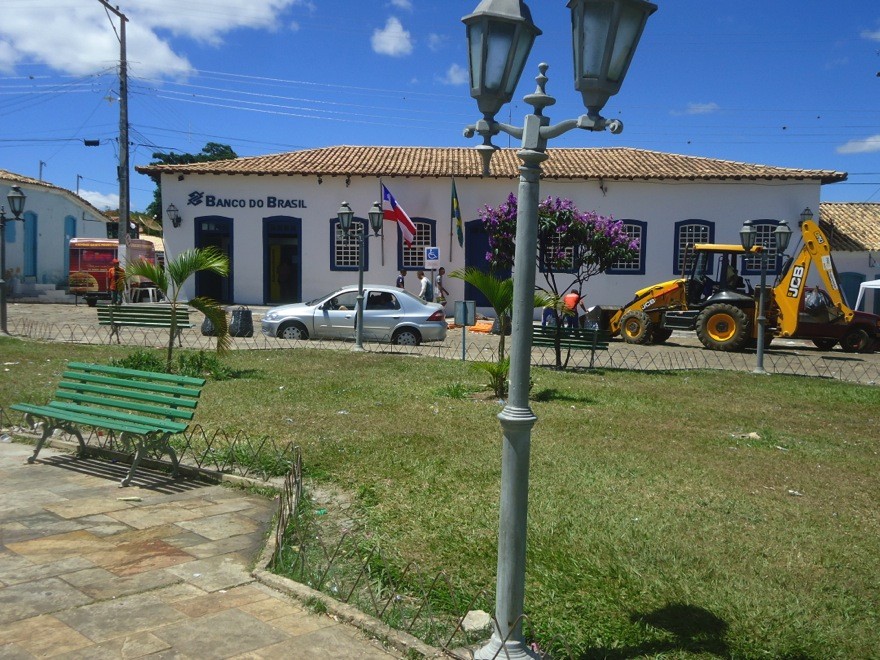
- History: The Casa de Fundição, which now houses the Rio de Contas Town Hall, has a rich history dating back to colonial times. Originally, this building was used as a smelting house, where gold extracted from local mines was melted down and turned into bars, playing a crucial role in the region’s economy during the gold cycle.
- Location and Structure: Situated in a central area of the city, the structure is an example of colonial architecture, with features that reflect the era in which it was built. Its stone walls and imposing façade speak of the city’s glorious past.
- Change of function: Over the years, the Casa de Fundição ceased to be a space dedicated to mining and was adapted to function as the seat of the municipal executive. This transition marked a new phase in the history of the building, which began to serve the community in different ways.
- Heritage preservation: The building is considered an important historical and cultural heritage site. Its preservation is essential not only for the city’s history, but also for future generations who should know and value the legacy left by their ancestors.
- Tourist Attraction: Today, the Casa de Fundição (Foundry House), as the headquarters of the Town Hall, is a point of interest for visitors seeking to better understand the history of Rio de Contas. The site often welcomes tourists and onlookers who want to learn more about the city’s history and heritage.
- Cultural significance: The building symbolises the resilience and adaptability of the community, which over the centuries has transformed a space of production and wealth into an administrative centre, keeping the local history and identity alive.
- Events and activities: The current town hall also promotes cultural events and activities, involving the population and visitors in celebrations that reinforce the importance of Rio de Contas’ history and culture.
7. Former town hall
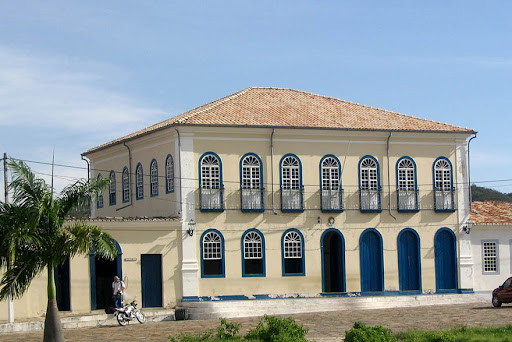
- Historical Importance: The old town hall of Rio de Contas, located in Bahia, is an important historical monument that reflects the town’s rich cultural heritage. The building dates back to the colonial period and was inaugurated in 1835, serving as the seat of municipal executive power for many years.
- Architectural style: The architectural style is characteristic of the period, featuring colonial elements such as stone details and an imposing façade, which bring out the aesthetics of the time.
- Social and political function: As well as being a landmark of public administration, the old town hall played a significant role in the social and political life of the community. For years, it was the centre of the city’s administrative and political decisions and hosted important events in local life.
- Feared Prison: The building is also known for having housed a prison, which was considered one of the most feared in the Bahian hinterland, adding an extra layer of history to its use.
- Tourist attraction: Today, the old town hall is a point of tourist and cultural interest, attracting visitors who want to learn more about the history of Rio de Contas.
- Preservation: The building was listed by the National Historical and Artistic Heritage Institute (IPHAN) in 1959, guaranteeing its preservation and valorisation.
- Modern Activities: The structure still houses some activities related to public administration, keeping the historical memory alive while continuing to serve the community.
- Symbol of Local Identity: The old town hall is a true symbol of Rio de Contas’ identity, representing the continuity of the town’s tradition and history.
8. Church of Our Lady Santana
The Church of Nossa Senhora Santana is located in Rio das Contas, Bahia, and is an important historical and cultural heritage site in the city.
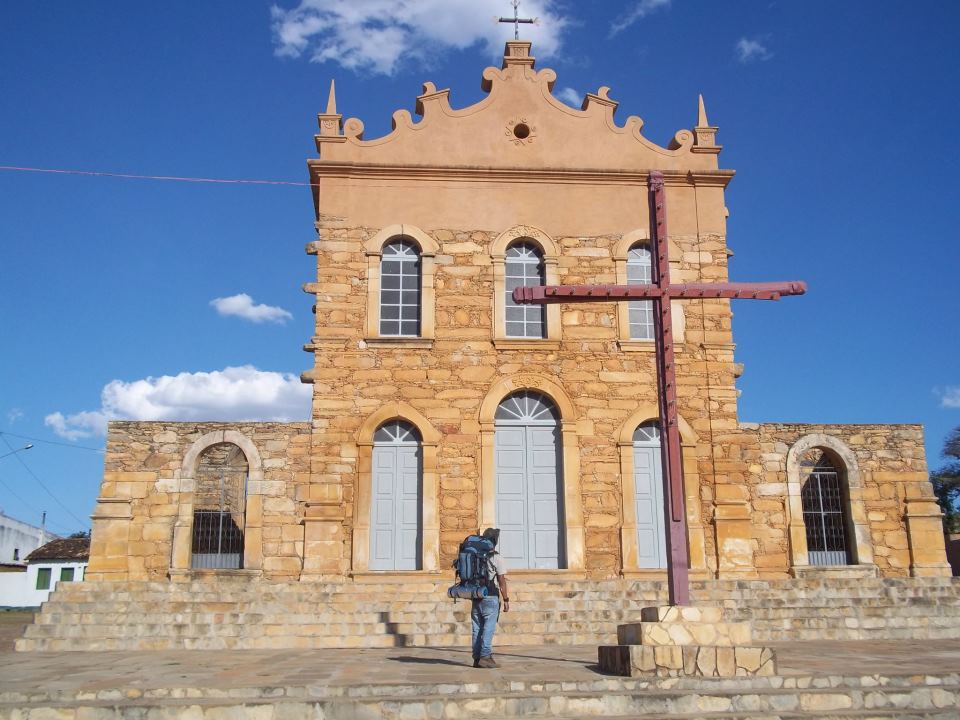
Features
- Architecture: The church has a colonial style, typical of 18th century religious buildings. It has a simple façade with decorative elements that reflect the aesthetics of the period, such as arched windows and a bell tower.
- History: Founded in 1774, the church is dedicated to Our Lady Santana, who is the town’s patron saint. The festival in her honour, known as Festa de Santana, attracts many faithful and tourists.
- Cultural importance: As well as being a place of worship, the church is a landmark in local history and a tourist attraction. The celebration of the Feast of Santana includes processions and cultural events, contributing to the preservation of local traditions.
- Preservation: The church is listed by the National Historical and Artistic Heritage Institute (IPHAN), which helps to guarantee its preservation and the valorisation of its historical heritage.
The Church of Nossa Senhora Santana is one of many examples of Rio das Contas’ rich cultural and religious heritage, contributing to the town’s identity and its history.
Bahia.ws is the largest tourist guide in Bahia and Salvador.
Publicações Relacionadas
Trail to Buracão Waterfall in Chapada Diamantina
How to get to Fumaça Waterfall in Chapada Diamantina
Marimbus Pantanal: Adventure in Chapada Diamantina
Curiosities of Rio de Contas in Chapada Diamantina
Waterfalls of Chapada Diamantina: A Guide for Adventurers
Orchids of the Chapada Diamantina in Bahia
History and Tourist Guide to Ibicoara in Bahia
Mining in the Chapada Diamantina History Explained
Ecotourism in Morro do Chapéu at 1012m altitude
How to get to and features of Poço Azul in Chapada Diamantina
Iraquara is also known as the "City of Caves"
Sempre-Viva: Symbol of Preservation in the Chapada Diamantina
Main Towns and Villages in the Chapada Diamantina Region
How to get to Cachoeira da Fumaça in Vale do Capão
Torrinha Cave in Iraquara, Chapada Diamantina
Chapada Diamantina's architectural style and influences
Discover the Beauty of Mucugê: Mountains, Rivers, and Waterfalls
Trekking in the Pati Valley in Chapada Diamantina
This post is also on:
Português
English
Deutsch
Español
Français
